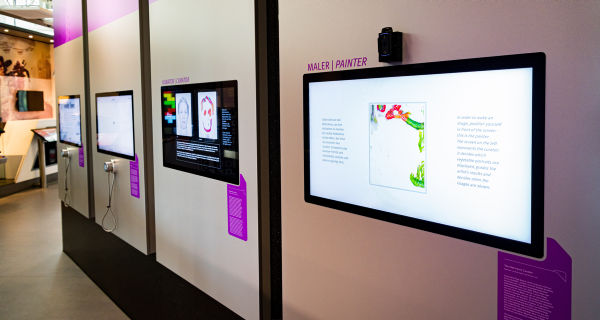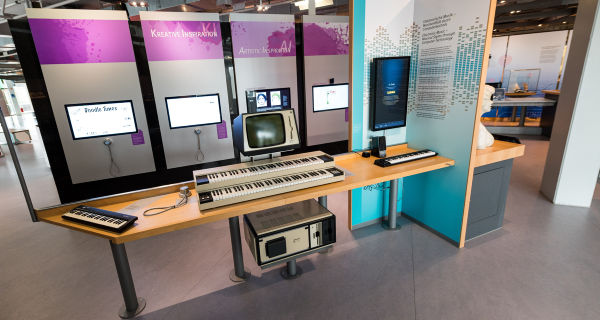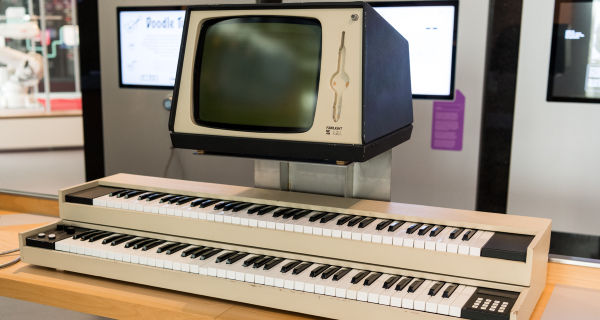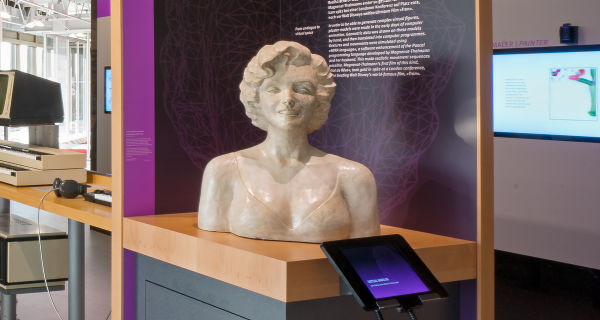The exhibition section devoted to computer art and computer music traces historic developments as well as presenting the latest trends. With the help of many different interaction options, visitors can use computer technology to express their creativity.
From printed documents and animations to network art
When works are generated with the help of computer-controlled machines and algorithms, the results are largely shaped by the state of computer technology at that moment. Computer art came onto the scene in the late 1950s. Mathematicians, physicists, electrical engineers and computer scientists visually transformed scientific formulas and began to artistically research the relationship between digits and art. Early experiments were conducted with computers, but were presented for the most part as static, printed images. The 1980s saw the possibility of animating graphics. Films and videos featured an increasing volume of realistically illuminated, high-resolution moving images and special effects. In the 1990s, new approaches like generative design, network art or interactive multimedia installations arose from commercial art such as computer games, music videos or web design.
Art through and by algorithms
Most recently, machine learning and neural networks are being incorporated into creative, artistic processes. Artificial intelligence is becoming a tool and partner in design, painting, photography, music and film. Can art be created with the help of artificial intelligence? Machine learning is intended to support human creativity, and algorithmic tools are supposed to help create new forms of audiovisual works. Visitors will gain insights into earlier computer animation by using an augmented reality app that explains and enhances a Marilyn bust from 1986. At interactive stations, visitors see how an electronic curator works and how simple line drawings are turned into music and normal photos into digital works of art with special effects.



